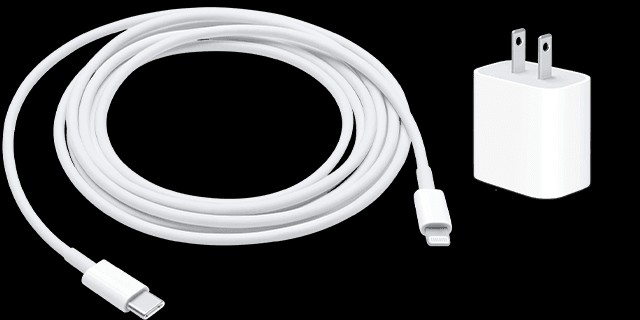It’s a common frustration: you plug in your phone expecting it to power up, only to find it stubbornly refuses to charge. Whether your phone is an iPhone, Android, or any other smartphone, encountering a charging issue can be disruptive. This guide will walk you through the common reasons why your phone battery might not be charging and provide step-by-step solutions to get you back on track.
Common Charging Methods for Your Phone
Before diving into troubleshooting, let’s ensure you are using a proper charging method. Modern phones are designed to charge via several power sources:
Wall Power Outlet
The most common and often fastest way to charge your phone is using a wall outlet. This involves connecting your USB charging cable to a USB power adapter, which is then plugged into a wall socket. Ensure you are using an adapter that is compatible with your phone’s power requirements for optimal charging speed.
Computer USB Port
You can also charge your phone by connecting it to a USB port on a computer. Use a USB 2.0 or 3.0 port on a computer that is powered on and not in sleep mode. Avoid using USB ports located on your keyboard as these may not provide sufficient power for charging. Charging via a computer USB port is generally slower than using a wall outlet.
Power Accessories
Powered USB hubs, docking stations, and other phone-certified accessories can also be used to charge your device. These accessories need to be powered themselves to effectively charge your phone. When using third-party accessories, ensure they are certified for your phone brand to guarantee compatibility and safety.
If you are attempting to charge wirelessly, particularly with iPhones or other phones supporting wireless charging, and it’s not working, first verify if wired charging with a USB cable works. If wired charging is successful, then the issue might be with the wireless charging setup.
When your phone is charging correctly, you should typically see a charging indicator icon on the screen, often a lightning bolt symbol within a battery icon in the status bar, or a large battery icon displayed on the lock screen.
Troubleshooting Steps When Your Phone Won’t Charge
If your phone is not charging, go through these troubleshooting steps, testing after each step to see if the issue is resolved:
-
Restart Your Phone: A simple restart can often resolve minor software glitches that might be preventing charging. Turn your phone off completely and then turn it back on.
-
Inspect Your Charging Cable and USB Adapter for Damage: Carefully examine your charging cable and USB adapter for any visible signs of damage, such as frayed cables, bent pins, or cracks. Damaged accessories can be hazardous and should not be used. Replace them immediately if damage is found.
 Image showcasing a USB-C wall adapter connected to a Lightning to USB cable, illustrating common phone charging equipment.
Image showcasing a USB-C wall adapter connected to a Lightning to USB cable, illustrating common phone charging equipment. -
Check the Wall Outlet and Connections: Ensure the wall outlet you are using is working by testing it with another device. Verify that the connections between your charging cable, USB wall adapter, and the wall outlet are firm and secure. Try using a different wall outlet to rule out a problem with the original outlet.
-
Clean Your Phone’s Charging Port: Dust, lint, and debris can accumulate in your phone’s charging port, preventing a good connection. Use a can of compressed air or a dry, soft brush (like a clean toothbrush) to gently clean the charging port on the bottom of your phone. After cleaning, firmly plug your charging cable back into your device.
-
Let Your Phone Charge for at Least 30 Minutes: Sometimes, if the battery is completely depleted, it might take a little while for your phone to register the charging and power on. Leave your phone plugged in for at least 30 minutes and check if there’s any charging indication on the screen.
-
Force Restart Your Phone: If your phone still doesn’t power on or show a charging icon after 30 minutes, try force restarting it. The method varies depending on your phone model:
- For many Android phones: Press and hold the power button and the volume down button simultaneously for about 10-15 seconds until the manufacturer’s logo appears.
- For iPhone 8 and later, and iPhone SE (2nd generation and later): Press and quickly release the volume up button, then press and quickly release the volume down button, and finally, press and hold the side button until the Apple logo appears.
- For iPhone 7, 7 Plus, and iPod touch (7th generation): Press and hold both the side (or top) button and the volume down button until the Apple logo appears.
- For iPhone 6s or earlier, iPhone SE (1st generation), and iPod touch (6th generation) or earlier: Press and hold both the side (or top) button and the Home button until the Apple logo appears.
-
Charge for Another 30 Minutes: After force restarting, let your phone charge for another half hour to see if it starts to take power.
If, after trying all these steps, your phone still refuses to power on or charge, it might indicate a more serious hardware issue, and professional service might be necessary.
Why Your Phone Might Stop Charging at 80%
In some cases, you might notice your phone charging up to 80% and then stopping. This is often due to battery health optimization features built into modern phone operating systems.
Optimized Battery Charging: Operating systems like iOS and Android have “Optimized Battery Charging” features. These are designed to prolong the lifespan of your phone’s battery by reducing the time it spends at 100% charge. The phone learns your charging habits and may intentionally pause charging at 80% and resume later to complete the charge closer to when you typically unplug. This is normal behavior and helps maintain battery health over time.
Temperature Considerations: Phone batteries can also be sensitive to temperature. If your phone gets too warm while charging, the software might limit charging to 80% to prevent overheating and further battery degradation. Your phone will typically resume charging once the temperature decreases. Try moving your phone and charger to a cooler location if you suspect temperature is the issue.
Charge Limit Feature: Some newer phone models, like iPhone 15 and later, may have a customizable charge limit feature. This allows users to set a maximum charge level, such as 80%, to further extend battery lifespan. If this feature is enabled, and you want to charge past the set limit, you’ll need to adjust the charging limit settings in your phone’s battery preferences.
“Accessory Not Supported” or “Certified” Alert Messages
If you see an alert message stating that your accessory is “not supported” or “not certified,” it could be due to several reasons:
- Dirty or Damaged Charging Port: As mentioned earlier, debris in the charging port can cause connection issues and trigger these alerts.
- Defective, Damaged, or Non-Certified Accessory: The charging cable or adapter you are using might be faulty, damaged, or not officially certified for your phone. Non-certified accessories may not meet the power delivery or safety standards required by your phone.
- Incompatible USB Charger: The USB charger you are using might not be designed to charge devices, or it might not provide sufficient power for your phone.
To troubleshoot these alerts:
- Clean the Charging Port: Ensure the charging port is clean and free of debris.
- Restart Your Phone: A restart can sometimes clear temporary software errors causing accessory detection issues.
- Try a Different USB Cable and Charger: Test with a different, preferably official or certified, USB cable and charger to rule out a problem with your current accessories.
- Update Your Phone’s Software: Make sure your phone is running the latest version of its operating system. Software updates often include improvements to accessory compatibility and charging management.
By following these troubleshooting steps, you should be able to identify and resolve most common phone battery charging issues. If your phone continues to have charging problems despite these efforts, consider seeking assistance from a professional phone repair service or your phone manufacturer’s support.
